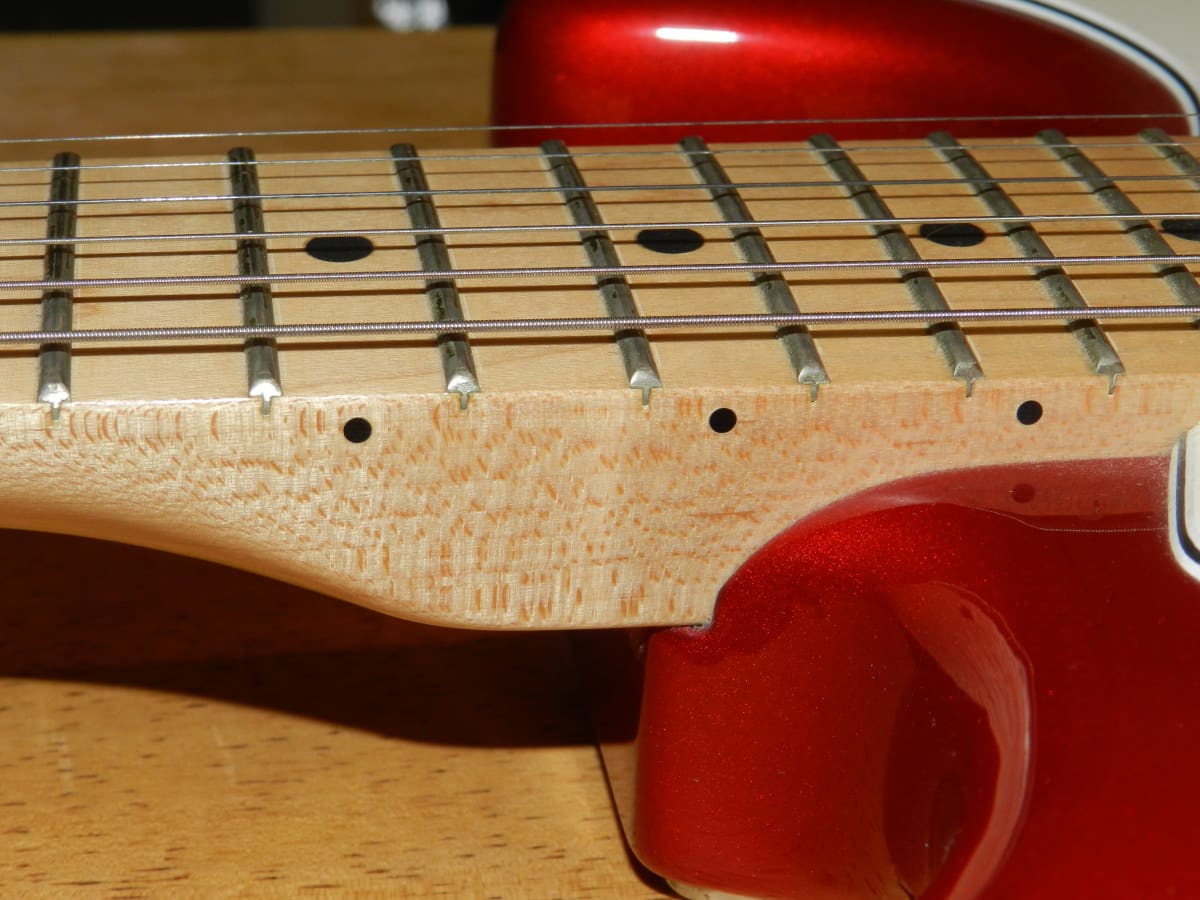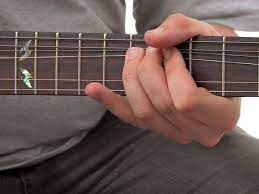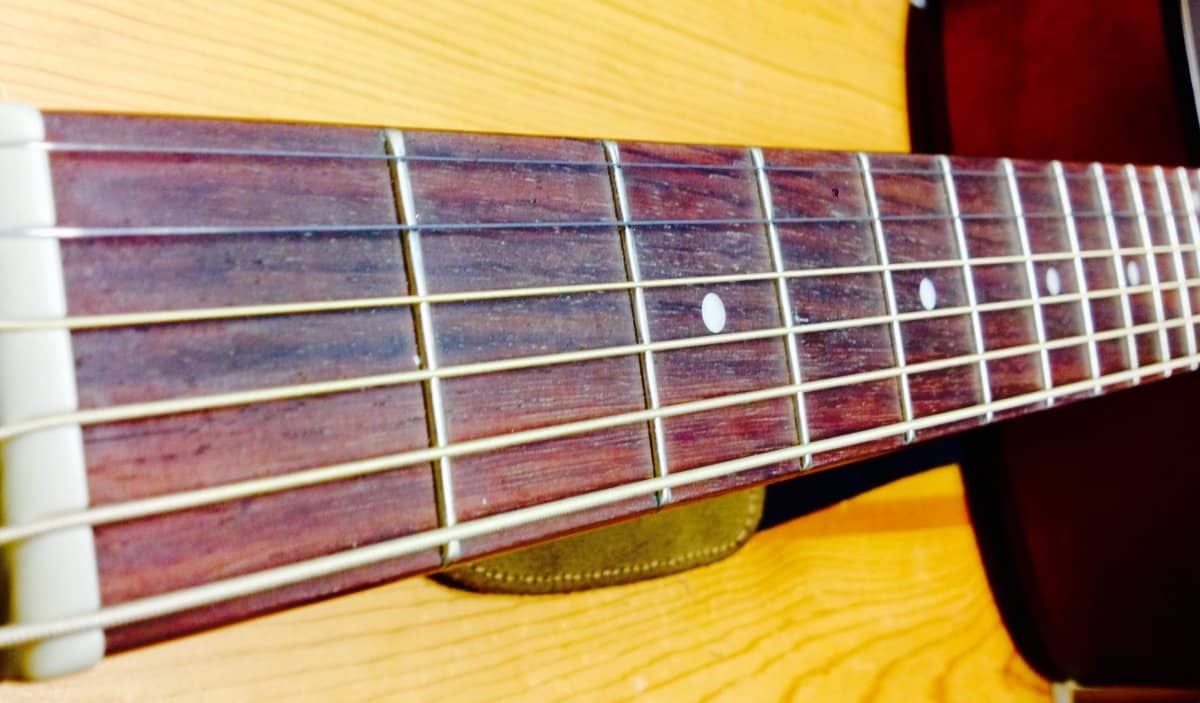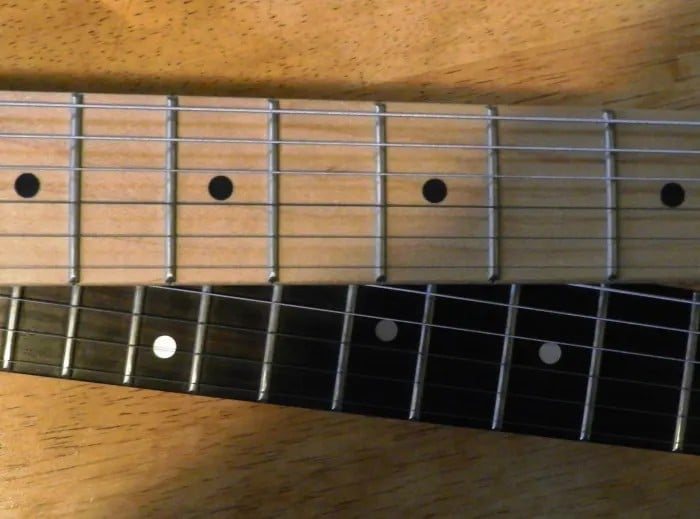Contents
Since the fretboard defines the appearance and performance of guitars, maple vs. rosewood fretboard shows up in many discussions among guitar players. Both materials have their own pros and cons so the winner changes from case to case. Thus, it is wise to pick the right one based on the playstyle. Check out this article if you desire the best material for the fretboard of your guitar.
Why It’s Important to Choose the Right Fretboard?
Certainly, different fretboard wood materials produce different tone characteristics of your guitar. Not only that, but it also affects the playability and looks. Different players have different preferences. That’s why you can find custom guitar models that allow you to choose the wood type for the body, fretboard, etc.
Those who have been playing guitars for years, especially those who have used different guitars with different fretboard material, can distinguish one from the other. They can develop a knack for identifying the fretboard material used based on how the fretboard looks and feels.
Characteristics Comparison Between Maple and Rosewood Fretboards
For you to know exactly what fretboard materials you’ll choose, here’s a detailed comparison of maple vs rosewood fretboard. These two materials will be compared based on tone, playability, as well as aesthetics.
Looks
It’s very easy to distinguish rosewood from maple the moment you see the guitar. Rosewood has colors ranging from dark caramel brown to light. Maple, on the other hand, has a lighter color, and depending on which tree the material is taken from, it may appear to be almost white. Guitars with maple fretboard age beautifully, revealing that vintage and classy look. You can find maple fretboards in Fender Standard Telecasters and Stratocasters.

Rosewood, on the other hand, comes in two kinds – Indian and Brazilian rosewood. The former is characterized by even grain, which may appear to be reddish-brown. Usually, when you see a guitar with rosewood material, it usually refers to the Indian kind because the Brazilian rosewood has been banned since the 1960s.
If you have walked to a guitar store or shopped online, you have seen a guitar with a rosewood fretboard. It’s common because it’s cheaper. Leading guitar manufacturers like Gibson, Ibanez, PRS, and even Fender have guitars with rosewood fretboards.
Feel
The feel of the guitar determines the playability of the instrument. If it’s comfortable to surf up and down the fretboard, the more playable it is.
Rosewood is a more porous fretboard material and naturally oily. This means it doesn’t need to be finished, but it feels a bit coarse compared to maple. There are some players who prefer this open-grained wood because they’ll have better control over string bending and other techniques.

If you want to play blues, with lots of bends, guitars with rosewood fretboards are the best for you. Rosewood fretboards require high maintenance since it’s prone to drying out easily.
Maple is also a porous fretboard, but usually given a lacquer coat or nitrocellulose finish to make them look glossy. Depending on the quality of the finish, maple fretboards can be ‘sticky’ and may limit their playability. Especially if your fingers are sweating while playing the guitars, it could feel grimy. Yet, one nice thing about coated maple necks is the ease in cleaning and maintenance.
Sound
Maple is dense which is known to provide brighter sound with more overtones compared to rosewood due to tighter grains and pores. This means, guitars with maple fretboard will have a good bite and tight low end. That being said, it’s versatile, and you can play nearly any genre.
For the rosewood fretboard, you can achieve warm and sweet tones. Since rosewood is porous, overtones are absorbed, resulting in warmer sounds. One good thing about rosewood is that it takes a brighter guitar and mellows it out a bit.
Care and Maintenance
Cleaning and maintenance have been quickly mentioned in the sections above. However, it’s very important to discuss it in detail. Maple fretboards are usually finished. Therefore, cleaning and maintenance aren’t very demanding. You can simply wipe it down with a dry cloth every after you’ve finished playing – especially if you have played for hours.

For unfinished maple and rosewood fretboard, you must also wipe it down with a dry cloth after every playing session to get rid of oils. However, rosewood is more challenging because of its dark color. Most players used lemon oil conditioners to keep the fretboards in good condition. Better yet, get a professional direction from your local guitar shop so you can maintain the color of your rosewood fretboard.
Pros and Cons of Maple Fretboard
Pros
- Finished maple fretboard enables fast action
- Doesn’t require too much care and maintenance
Cons
- Note bending is difficult because of the finish
- When the finish wears, the wood starts to absorb dirt and oils
Pros and Cons of Rosewood Fretboard
Pros
- Great for string bending, perfect for blues music
- Bold color makes you stand out from the rest
Cons
- High maintenance to keep everything in good condition
- Only Indian rosewood is available, some are endangered
Conclusion
So, which is better? You’ve read the comparison, which is wrapped up with brief pros and cons. Surely, you must have a bet in your mind already.
When you decide what fretboard to choose for your next guitar, you need to consider three things – looks, playability, and sound. So, what if you buy an expensive guitar with a premium finish and all, but you aren’t using it? Before you even bother to decide which fretboard is better, are you willing to play guitar?

First, decide what kind of sound you want to project. If you like a brighter sound, get a maple fretboard. Yet, for warm and sweet tones, you can find guitars with rosewood fretboards. Simply play the guitars to be able to decide which one is better for you. Whether you like the guitar with maple fretboard or the rosewood, just keep playing. What’s more important is to master the craft and be a great guitarist.

Hi music fan! I am Jeff. Hope that you enjoy some stuff I shared here in my personal blog.
About myself, Currently I am in charging as Artist Manager/Music Supervisor at 72 Music Management. I did managed album to Grammy Award in 2017 with 7 Nominations from 2014-2020 and had the opportunities to work with : A.J. Croce, Blind Boys of Alabama, Bobby Rush, Dom Flemons, Dustbowl Revival, Sarah Grace
Governor of the Memphis Chapter of The Recording Academy is one of a award that I am lucky to achieved.
